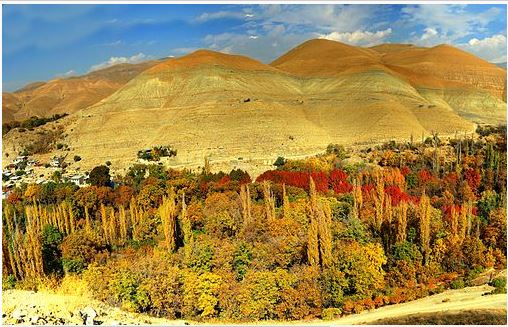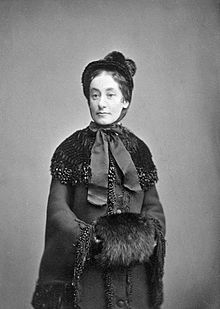
Baraghan-between Qazvin and Tehran.
Some Bibliographical and other Notes on the Twelver Shi`i-Shaykhi Baraghāni Family and the Shaykhi-Bābi Fātima Baraghāni, Tāhira, Qurrat al-`Ayn (d.1852 CE)
Stephen N Lambden (UCMerced).
Being corrected and supplemented - April 2014.
In preparing the notes below, I have benefitted from an article by Moojan Momen (2003: 317ff) who draws heavily on sections within Muhammad Ṣāliḥ Baraghānī's, Mawsū`a al-Baraghānī fi fiqh al-shi`a (n. p. 1985; see below) and other sources pertinent to the 19th century Baraghānī family focused upon here.
The Baraghani Family.
- Shaykh Muhammad Kāẓim Taliqanī (d. 1094/1683), a student of Bahā al-Dīn al-`Āmilī (d.`1031/1622) and Mir Damad (d.1041 /1631), the "progenitor of the Baraghānī family" .
- Shaykh Muhammad Ja`far Firishtah (d. 1XXX/1XXX), son of the above.
- Shaykh Muhammad Taqī (d. 1161/1748).
- Shaykh Muhammad Mala'ikah Baraghānī (d. 1200/1785) married Fāṭima who were the parents of the three sons listed below:
محمد تقى بن محمد شهىد ثالث، محمد تقى برغانى
[1] Mullā Muhammad Taqī [Baraghānī] al-Qazvīnī (c. 1167 [?83] -1263 AH = c. 1753 ??-1847 CE), al-Shahīd al-Thālīth (The Third Martyr), anti-Shaykhi-Babi uncle of Fāṭima Baraghani = Ṭāhira, Qurrat al-`Ayn (d.1852 CE). He married a daughter of Fath `Ali Shah who bore him three sons. He was "the first cleric to declare takfīr or (loosely) "excommunication" (c. 1238/1822) against Shaykh Aḥmad Ahsā'ī and subsequently became the leading opponent of Shaikhism in Iran. He studied in Iran and Iraq, and accompanied his teacher, Moḥammad-`Alī Ṭabāṭābā'ī on the 1242/1826 jihad against Russia. After a disagreement in Tehran with Fatḥ-`Alī Shah, he returned to Qazvīn, where he acquired a reputation as one of the best preachers of his day.." (MacEoin, EIr. ADD). He was an uncle of Fāṭima Baraghani = Ṭāhira and became one of the leading, pioneer Usuli Shi`i clerics of Qazvin.
Writings
Majālis al-muttaqīn

- Majālis al-muttaqīn. Muḥammad Taqī ibn Muḥammad Baraghānī, called ShahiÌd-i Thālīth i Tehran, 1270/1854. W. Cat. Copies exist in various American and Canadian University Libraries, including Princeton University Library. This volume is downloadable from the Hathi Trust Digital Library :
- ttp://babel.hathitrust.org/cgi/pt?id=njp.32101075183986;view=1up;seq=1
- دىات : کىفر جراىم بر جسم در حقوق اسلام = Diyāt : kayfar-i jarāyim bar jism dar ḥuqūq-i Islām. Qazvīn : Intishārāt-i Ḥadith-i Imrūz, 1382/2003.
- Majālis al-muttaqīn. XXXX: ??? 1307 /1889-1890. W. Cat. E-text available through the Islamic Heritage Project (IHP), Harvard University :
- http://pds.lib.harvard.edu/pds/view/11525463
Also :
شهيد ثالث : مجموعه مقالات کنگره بزرگداشت شهيد ثالث = Shahīd-i Thālith : majmūʻah-i maqālāt-i Kungrih-i Buzurgdāsht-i Shahīd-i Thālith. مقدمه و گردآورى، عبد الحسين شهيدى صالحى. شهيدى صالحى، عبد الحسين. ; ʻAbd al-Ḥusayn Shahīdī Ṣāliḥī. سايهگستر، Qazvīn : Sāyahʹgustar, 1388/ 2009-10. W. Cat.
See further Tunukabūnī, Mirza Muḥammad ibn Sulaymān (c. 1234-1302 AH =1819-1884 CE), Qiṣas al‑`ulamā. 1st ed. [Tehran] n.p. n.d. [1887-8] No. 2 = Hajji Mulla Muhammad Taqī ibn Muhammad Baraghānī al-Qazvīnī + recent 2004 editin = Qiṣas al‑`ulamā. ed. Muhammad Rida' Barzgar Khaliqi and Uffat Karbasi. Tehran: Intisharat `Ilmi va Farhang, 1383Sh/2004 (xxxiv+777+1 pp.) On No. 2 in this edition see pp. 22-76 which contains useful information about Shaykh Ahmad al-Ahsa'i and his takfir ("excommunication") as well as other issues within Shaykhi history.
[2] Mullā Muhammad Ṣāliḥ Baraghānī [Qazvīnī] (c. 1167-1271 AH [?] = c.1761-1854 CE) the father of Fāṭima Baraghānī entitled Ṭāhira (d.1852 CE). He founded an important Madrasa in Qazvin known as the Ṣāliḥiyya at which several sons of Shaykh Aḥmad al-Ahsā'ī (d.1241/1826) were instructed for a while (noted Momen, 2003). On him and his writings see Tunukabūnī, Mirza Muḥammad ibn Sulaymān, Qiṣas al‑`ulamā. ed. Muhammad Rida' Barzgar Khaliqi and Uffat Karbasi. Tehran: Intisharat `Ilmi va Farhang, 1383Sh/2004 (xxxiv+777+1 pp.) He is No. 5 in this edition see pp. 108-109 which contains useful information about Mullā Muhammad Ṣāliḥ Baraghānī, Qazvīnī and his Arabic and Persian writings.
Persian and Arabic Writings
Makhzan al-bukāʼ fī muṣībat Sayyid al-Shuhadāʼ.
- مخزن البكاء في مصيبة سيد الشهداء
Makhzan al-bukāʼ fī muṣībat Sayyid al-Shuhadāʼ. mid. 19th cent. Lithograph, c. 1853. W. Cat. - Makhzan al-bukāʼ. [Mashhad?]: XXX, 1308/1890-1. W.Cat.
- Tafsīr al-Baraghānī, wa-huwa miftāh al-jinān fi ḥall rumūz al-Qurʼān. al-Najaf, Maṭbaʻat al-Nuʻmān , 1958- or [cover 1960]. W. Cat.
- تفسير وتفاسير شيعه = Tafsīr va tafāsīr-i Shīʻah. Qazvīn : Ḥadīth-i Imrūz, 1381/ 2002-3.
- Mawsūʻat al-Baraghānī fī fiqh al-Shīʻah, al-musammāh bi-Ghanīmat al-maʻād fī sharḥ al-irshād. Muḥammad Ṣāliḥ Baraghānī ed. ʻAbd al-Ḥusayn Ṣāliḥī. Ṭihrān : Namāyashgāh-i Dāʼimī-i Kitāb, 1405/1984-5.
- كنز المصائب في بيان احوال سادتنا الاطائب = Kanz al-maṣāʼib fī bayān aḥwāl sādatinā al-aṭāʼib. Lithograph, c. 1853. WorldCat sums this up as a "Text on the deaths of Muḥammad, Fāṭimah, ʻAlī, Ḥasan, and Ḥusayn".
Also :
- شهيد ثالث : مجموعه مقالات کنگره بزرگداشت شهيد ثالث = Shahīd-i Thālith : majmūʻah-i maqālāt-i Kungrih-i Buzurgdāsht-i Shahīd-i Thālith. مقدمه و گردآورى، عبد الحسين شهيدى صالحى. شهيدى صالحى، عبد الحسين. ; ʻAbd al-Ḥusayn Shahīdī Ṣāliḥī. سايهگستر، Qazvīn : Sāyahʹgustar, 1388/ 2009-10.
[3] Mullā Muhammad `Alī Baraghānī [Qazvīnī] (c. 1175-1272 A H= c.1761-1854 CE) an uncle of Fāṭima Baraghānī = Ṭāhira. He was a mystically oriented teacher at the Ṣāliḥiyya of his brother and obtained an ijāza from Shaykh Aḥmad al-Ahsā'ī (d.1241/1826). He subsequently became an enthusiastic Shaykhi and seems to have sympathized with the religion of the Bāb,
Fāṭima Baraghānī, - Qurrat al-`Ayn - Ṭāhira [ = Ṭāhirih] (c. 1817-1852),

Alleged portrayal of Tahira, Qurrat al-`Ayn.
Entitled and best known today as Ṭāhira (The Pure One), Fāṭima Baraghānī was also entitled Qurrat al-`Ayn ("Solace of the Eyes") and Zarrin Taj (Crown of Gold). She was the eldest daughter of Mullā Muhammad Ṣāliḥ al-Baraghānī [al-Qazvini] (No.2. above) and Amina (1202-1268 AH= 1787-1851). A Shi`i-Shaykhi and ultimately Bābī apologist and martyr (d. 1852 CE ) this revolutionary Babi woman is today internationally famous. Before coming to faith in the Bab (1819-1850) in 1260/1844 she (like other members of her family) was a very learned and accomplished adherent of the Shaykhi school whose founding master Shaykh Ahmad and (after 1826) and successor, Sayyid Kazim Rashti (d.1259/1843) she greatly admired. By the 21st century there have come to exist perhaps forty to fifty or more books and papers about Tahira several of which have recently been published. Her numerous poems and prose writings in Persian and Arabic await adequte editions, studies and translations.
The dynamic, charismatic and extraordinarily learned Persian woman Ṭāhira was enraptured by the person and teachings of the first two Shaykhī leaders. In 1260/1844 she, along with her cousin and a number of other Shaykhis, were numbered among the first disciples of Sayyid `Ali Muhammad Shirazi, the Bāb, the Hurūfāt al-Ḥayy (the 18 "Letters of the Living"). Ṭāhira remained a devoted and revolutionary Bābī, (follower of the the Bab), from the very beginning of his messianic career until she was brutally executed or martyred in 1852 CE.
For biographical details see : URL :
For useful biographical and family details see Moojan Momen,
- `Usuli, Akhabri, Shaykhi, Babi: The Tribulations of a Qazvin Family' in `The Journal for the Society for Iranian Studies', Iranian Studies vol. 36/3 (Sept. 2003) 317-337.
Baha'i generated materials about Ṭāhira include:
Mulla Muhammad Nabil-i Zarandi (d.1892 CE) [Shoghi Effendi ed. and trans.]
- The Dawn-Breakers: Nabils Narrative of the Early Days of the Baha'i Revelation. See index.
Fāḍil-i Māzandaranī,
- Kitab-i Zuhur al-Haqq. Vol. 3 (n.p. [Tehran] n.d [c. 194?]),pp. 311-369.
Hussam Nuqaba'i
Nusratu'llah Muhammad Husayni,
- Hadarat-i Ṭāhira . Dundas, Ontario: 2000.
Abu'l-Qasim Afnan (d. XXXX)
Some Early Baha'i and other books and articles about Tahira.
Najmájer, Marie Von, (b. Budapest, 1844-d. Bad Aussee, Austria,1904) - Hungarian born Austrian novelist and poet.

Marie Von Najmájer
Gurret-ül-Eyn. (A picture from the Persian modern times in 6 Songs about Bahá'í religious movement), Wien 1874
- Eigenh. Gedichtmanuskript „Dualismus" mit Unterschrift. 24. II. 1902., 1902. 4to. 2 pp.
Martha L. Root,
- Tahirih The Pure, 1st ed. Karachi, 1938.Rep. Los Angeles : Kalimat Press, 19XX.
"Martha Root became fascinated by Táhirih's story and traveled to Iran in an effort to learn more about this remarkable woman. This book is the result of her research".
Though most of Tahirih's theological and apologetic Shaykhi and Babi writings and the bulk of her poems remain unpublished, several volumes have recently been published about Tahirih and her poetry. They include :
Amin Banani (edited and translated)
- Tahirih, A Portrait in Poetry-- Selected Poems of Qurratu'l-`Ayn (= Studies in the Babi and Baha' religion vol. 17). Kalimat Press Los Angeles, 2004. ISBN 1-890688-36-3 HBk. vi+145 pp. Contains an opening essay entitled ' A Woman for Our Time' (pp.1-30) followed by another by Jascha Kessler, `On Translating a Persian Mystical Poet' (pp.31-38) and an Editor's (Tony Lee's) Note (pp. 39-43). A selection of Tahirih's poems in the original Persian (+Arabic) with English translation by Banani (and Kessler) occupy pages 45-105. Notes by Banani briefly supplement and clarify aspects these texts. See further, URL: http://www.kalimat.com/Tah-Poetry.html
- Tahirih in History : Perspectives on Qurratu'l-'Ayn from East and West Edited by Sabir Afaqi The volume brings together most of what we know about Tahirih Qurratu'l-'Ayn. Included is history from: 'Abdu'l-Baha and Shoghi Effendi; the work of scholars in India and Pakistan; and essays by Western scholars, such as E. G. Browne, A.-L.-M. Nicolas (translated from French), Abbas Amanat, Farzaneh Milani, and others. Kalimat Press Los Angeles, ADD...
♦



